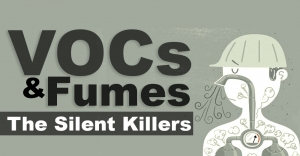Search
Inkjet Inks
Eco Friendly Campaigns Giving that Extra Mile for the Green
Whether we love it or hate it advertising has always been and will be part of our daily lives, which could have a significant impact and can be relate to our collective action.
Billboards form an integral part of advertising and could do more than just advertise. Thanks to the current trend that increasingly focuses on worrying about ecology and trying to reduce our footprint, it was only a matter of time that green technologies would make their spirited foray into this popular field of advertising.
As a graphic designer I have always admired those advertising campaigns that have taken that extra mile, necessary to merge advertising with the protection of the ecosystem without losing its focus and purpose.
UTEC - Air Purifier Billboard

Photo courtesy of www.utec.edu.pe
The creators of the billboard that turned air into drinkable water, (the University of Engineering and Technology of Peru) now they have created a billboard that sucks pollution from the sky and returns purified air; claiming that the billboard can purify almost 100,000 cubic meters of urban air per day (equivalent to the work of 1,200 mature trees).
Toyota - Air Cleaning Eco Board

Photo courtesy of www.utec.edu.pe
A few years ago Toyota also created a billboard that could clean the emissions of several vehicles each month.
Coca-Cola - Absorbs Air Pollution

Photo courtesy of www.interest.cl
Coca-Cola did not want to fall behind and together with the WWF designed a billboard made out of sustainable, recyclable materials, covered with 3,600 pots of the air pollutant-absorbing Fukien tea plant.
Mc Donald’s - Bee Hotel

Photo courtesy of www.popucity.net

Photo courtesy of www.theanimalclub.net
Everyone knows that as a result of the growth of cities, bees have lost much of their habitat, alarmingly reducing their number to the point of extinction in some populated areas. This is why Mc Donald´s Sweden, knowing the importance of them, has conditioned many of its bilboards to provide accommodation, creating hotels for them.
Koleston Naturals - Change

Photo courtesy of www.adsoftheworld.com
This company, dedicated to the manufacture of hair dyes, invites us to admire the beauty of nature taking advantage of its environment and without visual pollution.
Corona - Wave of Waste

Photo courtesy of www.campaignlive.co.uk
Corona, together with artist Andy Billett, created a billboard / sculpture which aims to raise awareness that we must properly recycle our waste since most of it does not reach garbage dumps and end up in the oceans.
Coca-Cola - Open, Taste, Recycle

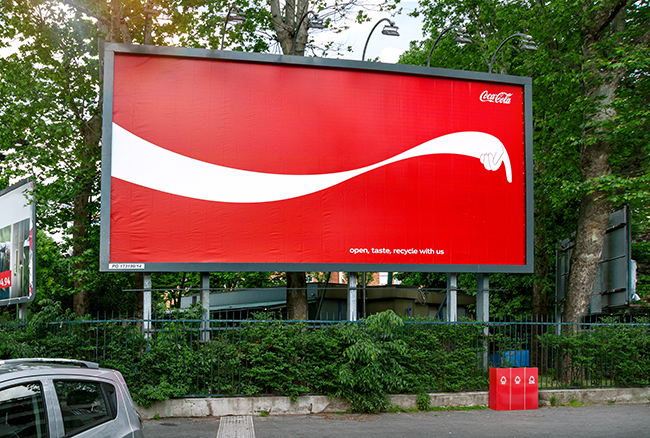

Photo courtesy of www.adeeveen.com
It is not always necessary to alter the structure of a billboard or that it has a mechanical or chemical operation so that advertising is beneficial to the environment. Such is the case of this Coca-Cola campaign that slightly modified its logo to encourage consumers to recycle.
Advertising that Invite

Photo courtesy of www.designyoutrust.com
Many times it takes just a little imagination and a minimum effort to invite us to put the garbage in its place.
Be.tex by bergertextiles
Few years ago bergertextile introduced to the digital market one of the first sustainable textiles for large format digital printing. Now few months from the beginning of 2020 and true to the motto: “be.responsible”, bergertextile presents its expanded product range with sustainable textiles for brilliant printing applications.
In addition to the be.tex Samba FR bergertextiles introduces two more green products, made from 100% recycled yarn (rePET – PET bottle recycling), called be.tex Green Revolution FR and be.tex Green Valuetex FR, which are specially designed for display frame systems.
be.tex Samba FR
Facts: 160 / 260 / 320 cm width, 195 g/m², 1 % stretch
Applications: Lightboxes
be.tex Green Revolution FR
Facts: 160 / 260 / 320 cm width, 180 g/m², 1 - 3 % stretch
Applications: Banner, Pop-Up Displays, Table Cloth
be.tex Green Valuetex FR
Facts: 320 cm width, 150 g/m², 1-4 % stretch
Applications: Banner, Pop-up Displays, Table Cloth
How does used PET bottles become a textile?
The yarn for this textile is obtained from used PET bottles in a GRS-certified process. Approximately 12 used 1.5 liters PET bottles yield one square meter of textile. Used PET-bottles are cleaned in a water-saving manner, shredded into small flakes and processed into granulate. This is melted, converted into fibers, spun into yarn and finally processed into new bergertextiles. 100 % recycled.

Photo courtesy www.bergertextiles.com

Photo courtesy www.bergertextiles.com

Photo courtesy www.bergertextiles.com
VOCs and Fumes The Silent Killers
In the digital printing industry, it´s of general knowledge that the printshops that have solvent ink printers handle fumes and odors that can cause health concerns and discomfort to their employees and customers. So it's no surprise that to solve this situation there are different types of solvent-based inks (Mild-Solvent, Eco-Solvent, Lite-Solvent, etc.) in the market that claim to be ecological and low odor.
The evaporation of the solvent components, responsible for transporting the ink and subsequently printing it on the material, are the primary source of production of these VOCs.
Volatile organic compounds (VOCs) are gases emitted from certain solids or liquids as a result of a chemical transformation such as heating, etc. Inhalation of these fumes is dangerous because the hazardous components in them. The evaporated solvent product has been deemed hazardous to people when exposed to high-concentration levels. Fumes from chemicals or toxic substances can irritate your airways, skin and eyes, and inhaling a substance can make your nose and throat sore or swollen.
As a personal anecdote: many years ago I used to work in a printshop as a technician / operator of a Vutek Ultra VU printer (long before this brand was purchased by efi). This printer was installed in a refurbished 8mts x 10mts room that used to serve as a warehouse.
Constructed as a warehouse, this room did not have adequate ventilation to work with solvent-based digital printing machinery. One day, I was sitting working on an order that consisted of thousands of banners when suddenly I fell asleep, due to the filling of the air with solvent fumes. It is worth mentioning that after this event the company installed a VOCs extraction system.
But not only during the printing process we can find these VOCs, also during the finishing process we can find find this extremely harmful fumes for the human health.
It is increasingly common to see in trade shows, all around the world, a wide variety of CNC machinery presuming its ability to cut on a variety of materials (some more rigid than the others). The presence of several CNC cutters working in an enclosed space at the same time makes the environment so heavy that it is difficult to be near them for more than ten minutes
When a machine is so powerful that can cut thick material like a hot knife through butter, the fumes produced during this process are hazardous gases (include acutely toxic, corrosive, flammable and oxidizing gases) that are sufficiently toxic for the human being.
The NFPA (National Fire Protection Association) in its norm 704 (Standard System for the Identification of the Hazards of Materials for Emergency Response) define the toxicity of materials, that in short exposure could cause serious temporary or moderate residual injury are given a Health Hazard rating of 3 and materials that in very short exposure could cause death or major residual injury are given a Health Hazard rating of 4.
The NFPA (National Fire Protection Association) in its norm 704 (Standard System for the Identification of the Hazards of Materials for Emergency Response) define the toxicity of materials, that in short exposure could cause serious temporary or moderate residual injury are given a Health Hazard rating of 3 and materials that in very short exposure could cause death or major residual injury are given a Health Hazard rating of 4.
VOCs include a variety of chemicals, some of which may have short- and long-term adverse health effects.
Short-term effects
- Headache
- Nose, throat, eye irritation
- Coughing, painful breathing
- Pneumonia, bronchitis
- Skin irritation
- Dizziness
- Sleepiness
- Visual disorders
- Memory problems
Long-term effects
- Affects the central nervous system (headache, anxiety)
- Cardiovascular diseases
- Respiratory diseases (asthma, cancer)
- Impacts on liver, spleen, blood
- Impact on the reproductive system
- Irritation of the eyes, nose, and throat
- Nausea
- Fatigue
- Loss of coordination
- Dizziness
- Damage to the liver, kidneys, and central nervous system
- Cancer
Currently there are many companies working on the improvement of this type of inks to reduce the amount of VOCs without compromising the quality of it. Also there are several companies dedicated to the manufacture of air purifiers that are responsible for eliminating pollutant gases leaving a safer environment for workers who spend most of their time next to this equipment.
There are other printing alternatives, a little healthier for the technician who operates the equipment as well as for the environment, although not very friendly to the pocket of the company owner.
The most important point is the awareness to the owner of the printshop in the creation of a healthy and safe environment, avoiding subsequent complications to their workers in the short and long term. Of course, you must invest but do not forget that you should not play with people's health.
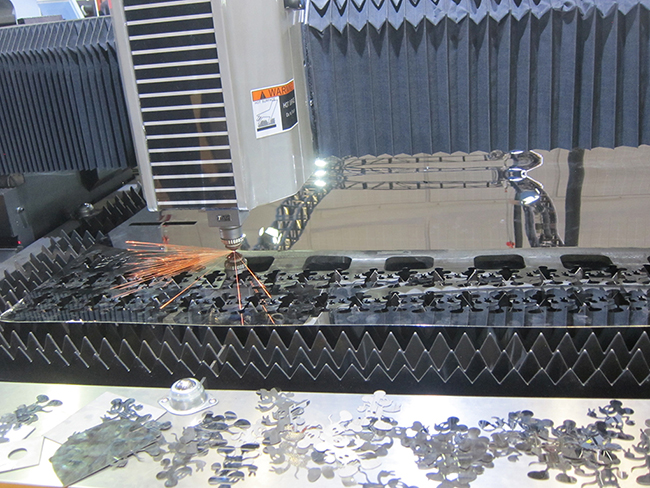
When a machine is so powerful that can cut thick material like a hot knife through butter, the fumes produced during this process are hazardous gases
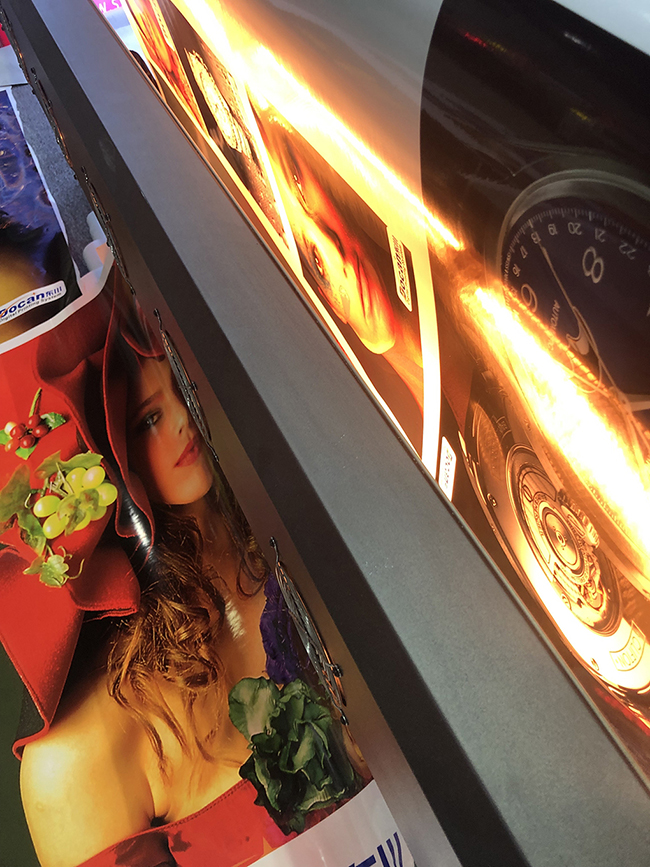

The evaporation of the solvent components, responsible for transporting the ink and subsequently printing it on the material
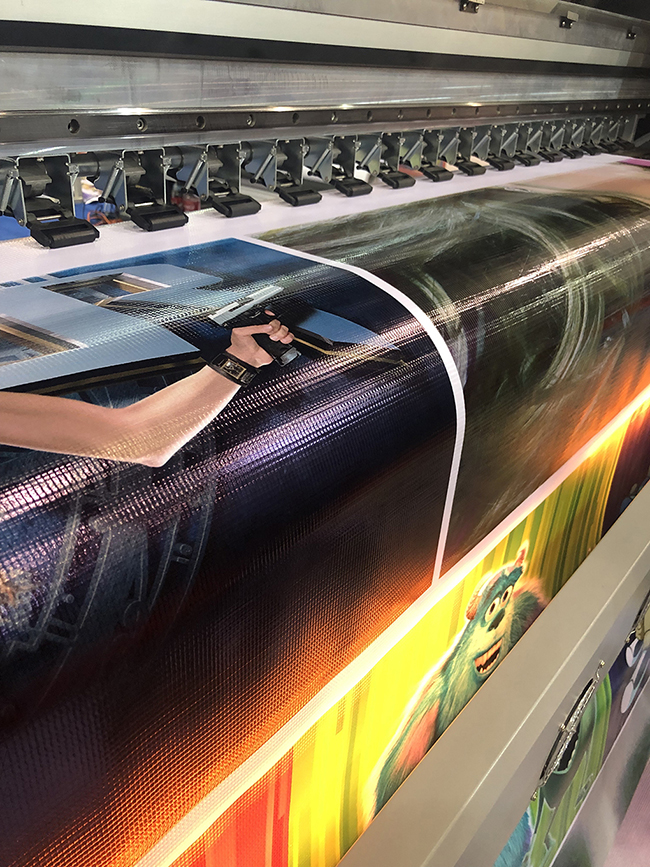




Bioplastics, are they really eco-friendly?
Plastics and “green choice” usually don’t go together as most plastic materials are made from petroleum, these include: polyethylene, PVC, polypropylene, polystyrene, polyester, nylon and acrylic.

Most plastics don’t decompose. This means plastic can stick around indefinitely, destroying marine ecosystems. (noaa.gov)
In the past decades, the search for an eco-friendly alternative to petroleum based plastics has led to the development of several bioplastics; materials specifically made from renewable resources and therefore diminishing the amount of energy required to produce them. Some are made from plants, most often from sugar cane or cornstarch, although they can also be produced from potatoes, or other plants, these plastics are often referred to as PLA (PolyLactic Acid or PolyLactide) or Cellulose Acetate.

To transform corn into plastic, corn kernels are immersed in sulfur dioxide and hot water, where their components break down into starch, protein, and fiber. The kernels are then ground and the corn oil is separated from the starch. (columbia.edu)
Bioplastics are generally considered to be more eco-friendly than traditional plastics, this isn’t necessarily true, and bioplastics have a significantly lower carbon-footprint than traditional plastics over their lifetime. But in order to degrade bioplastics, most of them need high temperature industrial composting facilities to break down the material in less than 3 months, but it will take about 1,000 years to degrade in a landfill.

Landfills prevent waste from biodegrading, especially plastics. (thisisplastics.com)
Very few cities have the infrastructure needed to degrade bioplastics and the problem magnifies when these plastics are not separated correctly from other plastic types such as PET (polyethylene terephthalate). The problem is when plastics get recycled, they are not compatible and the resulting plastic batch may get rejected as a consequence.

Plastics need to be classified in order to be recycled correctly.
The alternatives bioplastics are limited, PHA (polyhydroxyalkanoate) is one of them, a plastic made from living things. PHA is a unique polyester made naturally by certain bacteria, generally from organic waste. It is used to make plastic bags and single use containers; in the medical field is where this material shines, thanks to its biodegradability it can be used to make sutures, bone plates, orthopedic pins, etc.

Plastic bags and other articles made from PHA plastic. (wur.nl)
PHA is biocompostable and marine degradable and has no toxic effects, but currently is difficult and expensive to produce.
Source: University of Florida, Columbia University
Columbia University
https://blogs.ei.columbia.edu/2017/12/13/the-truth-about-bioplastics
University of Florida
https://sfyl.ifas.ufl.edu/media/sfylifasufledu/flagler/sea-grant/pdf-files/microplastics/Bioplastics-vs-petroleum-plastic-final.pdf




